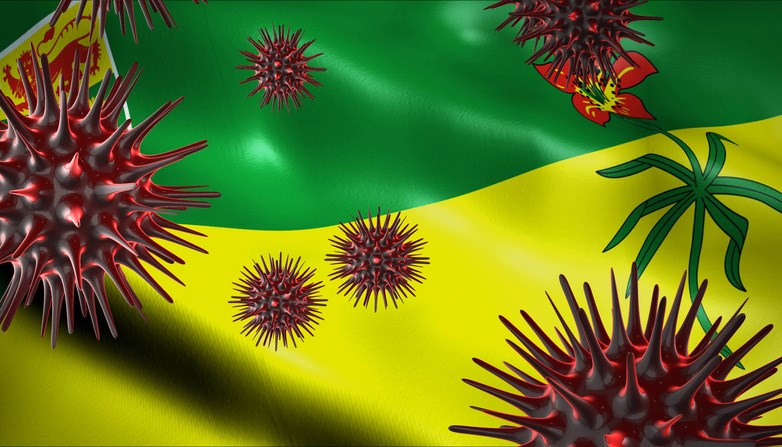NORTH WEST - There are signs that "community transmission is uncontrolled" of COVID-19 in the North West zone.
That was one of the items that came from a media availability Friday with Dr. Mandiangu Nsungu, Medical Health Officer with the Saskatchewan Health Authority, who told reporters the region was experiencing the fourth wave of COVID-19.
That was indicated by the deterioration shown in modelling indicators. Dr. Nsungu presented numbers showing the swift change over the previous five weeks.
For the week of Aug. 17-23 the number of daily new cases stood at 12. In subsequent weeks that number shot up to 30, 44, 58, and finally 60 for the week of Sept. 14-20.
Daily active cases have also climbed, from 81 for the week beginning Aug. 17, up to 175, 359, 491, and 633 in the following weeks.
Test positivity is also up, rising from 15.1 percent for the week of Aug. 17 to 24.9 for the week of Sept. 7. It went down to 24.4 for the week of Sept. 14-20.
“It gives you an indication of the magnitude of the change in the past few weeks,” Dr. Nsungu said.
The majority of cases are due to the Delta variant which has been identified as the most dominant strain. The majority of cases are in the Lloydminster area, something which has been consistent over the past few weeks.
Of 383 active cases on Sept. 20, 210 or 54.8 percent have been from Lloydminster. 68 active cases or 17.8 percent were from the Battlefords, 30 cases are from Meadow Lake and 75 are classified as rural.
While the numbers from the Battlefords are lower than those seen in nearby Lloydminster and Saskatoon, Dr. Nsungu cautioned against Battlefords residents being lulled into a false sense of security, as he stressed that there was no area in the North West where there was not COVID-19 cases.
“COVID-19 is everywhere in Saskatchewan,” said Dr. Nsungu, who noted cases can flare up suddenly even in an area with few cases. “There is no area that you consider safe.”
The vast majority of the cases in the region involve people who are not fully vaccinated. 82 percent of cases between Aug. 30 and Sept. 19 involve individuals who are not fully vaccinated, while 18 are fully vaccinated.
Numbers were also provided for Saskatchewan vaccine coverage. As of Sept. 22 in the North West area, 63 percent of the eligible population were fully vaccinated, down from while 78 percent of the eligible population had one dose.
Dr. Nsungu also noted in the last week the uptake had gone up by two percent, which was a good sign.
Vaccination for those eligible was touted as the best protection against disease and death, and the Saskatchewan Health Authority was saying it was also necessary to continue non-pharmaceutical measures as an extra layer of protection
The key messages from Dr. Nsungu and the Saskatchewan Health Authority was that it was a very serious situation, with “a potential to overwhelm acute care services.”
Hospitals are feeling the pressure. At Battlefords Union Hospital, Dr. Nsungu said the most recent number was 11 COVID-19 patients.
But the situation is much worse at the Lloydminster Hospital, which Dr. Nsungu noted has been under tremendous pressure.
Lloydminster Hospital had 24 patients with COVID-19, according to the recent numbers. Unlike Battlefords Union Hospital, the Lloydminster hospital does not have ICU capacity, so Lloydminster patients who require ICU would be transferred to larger centres such as Saskatoon or Edmonton.
“The situation is serious,” said Dr. Nsungu. “It is already a lot of pressure on the hospital. We can only anticipate the situation will continue to deteriorate in the next few weeks.”
He recommended people “play our part and do everything we can in order to participate in the solution,” including getting vaccinated and to follow the public health orders.




